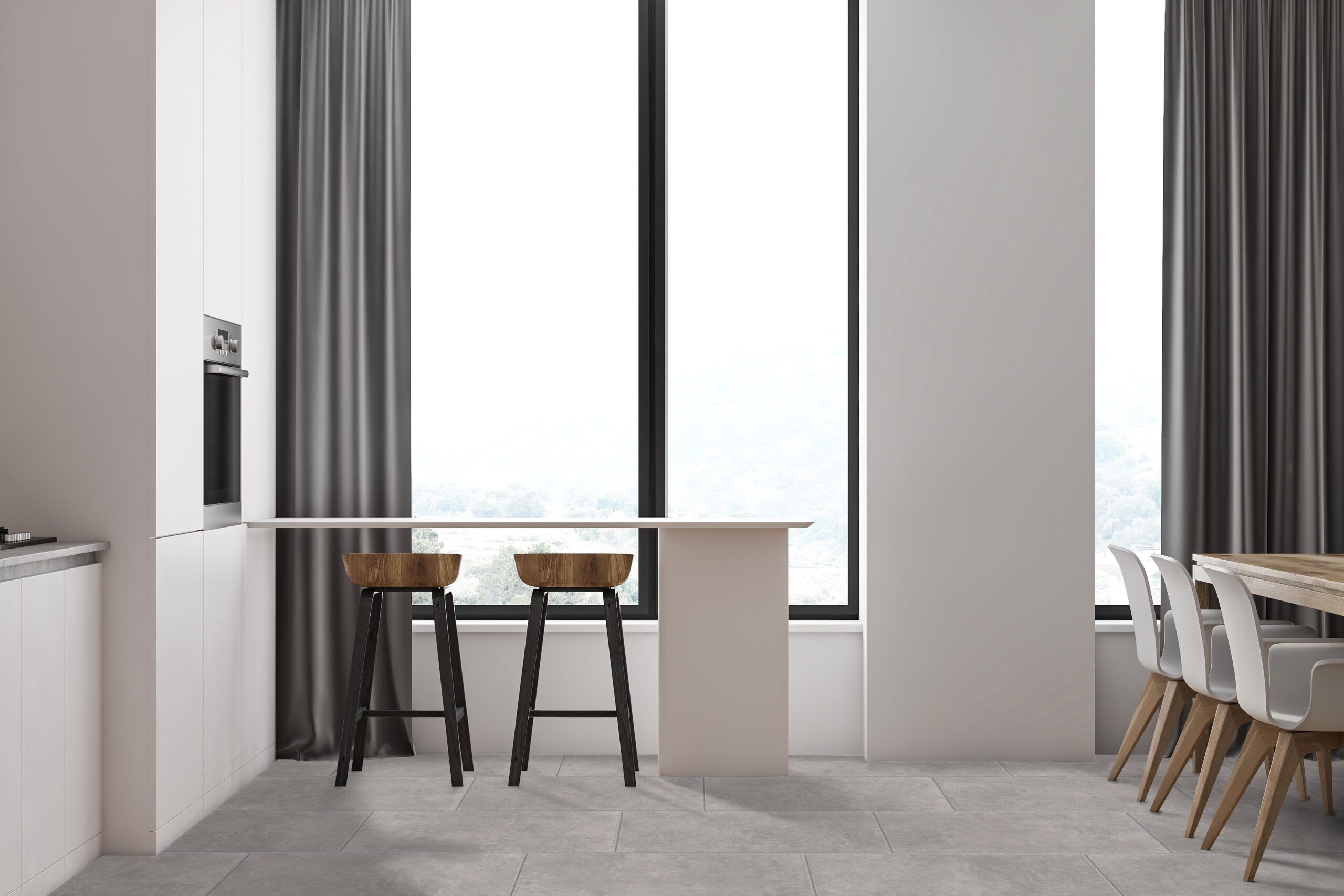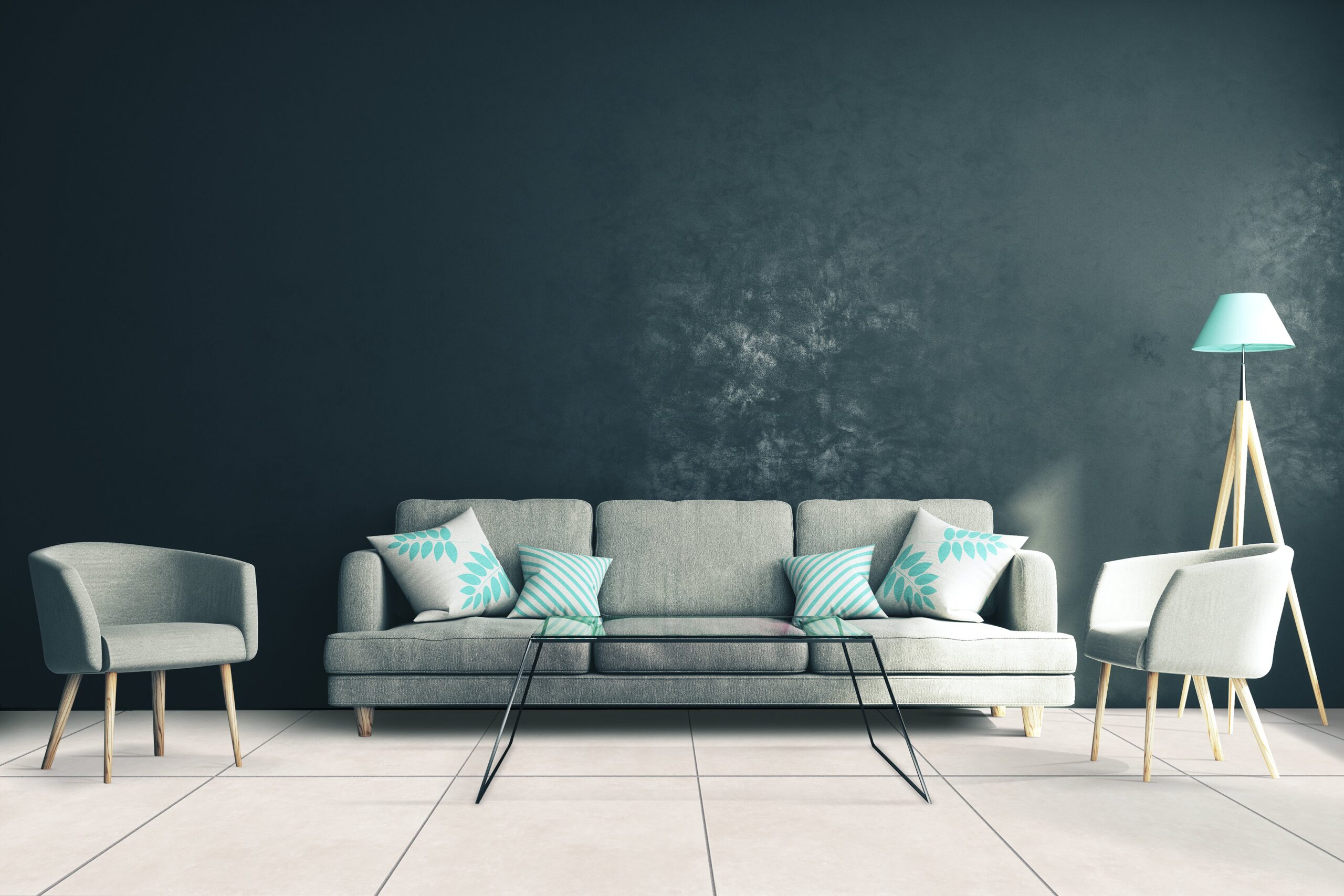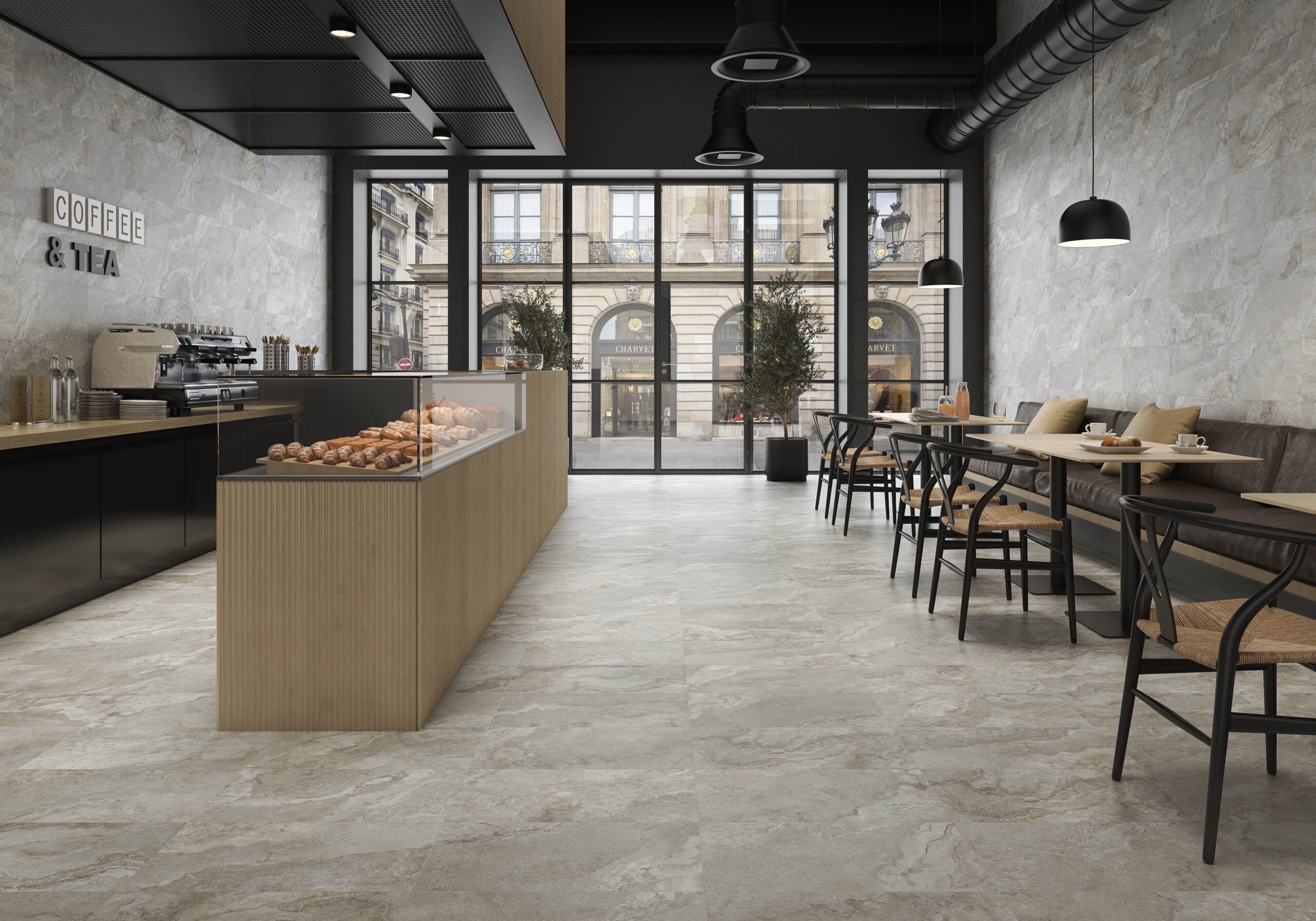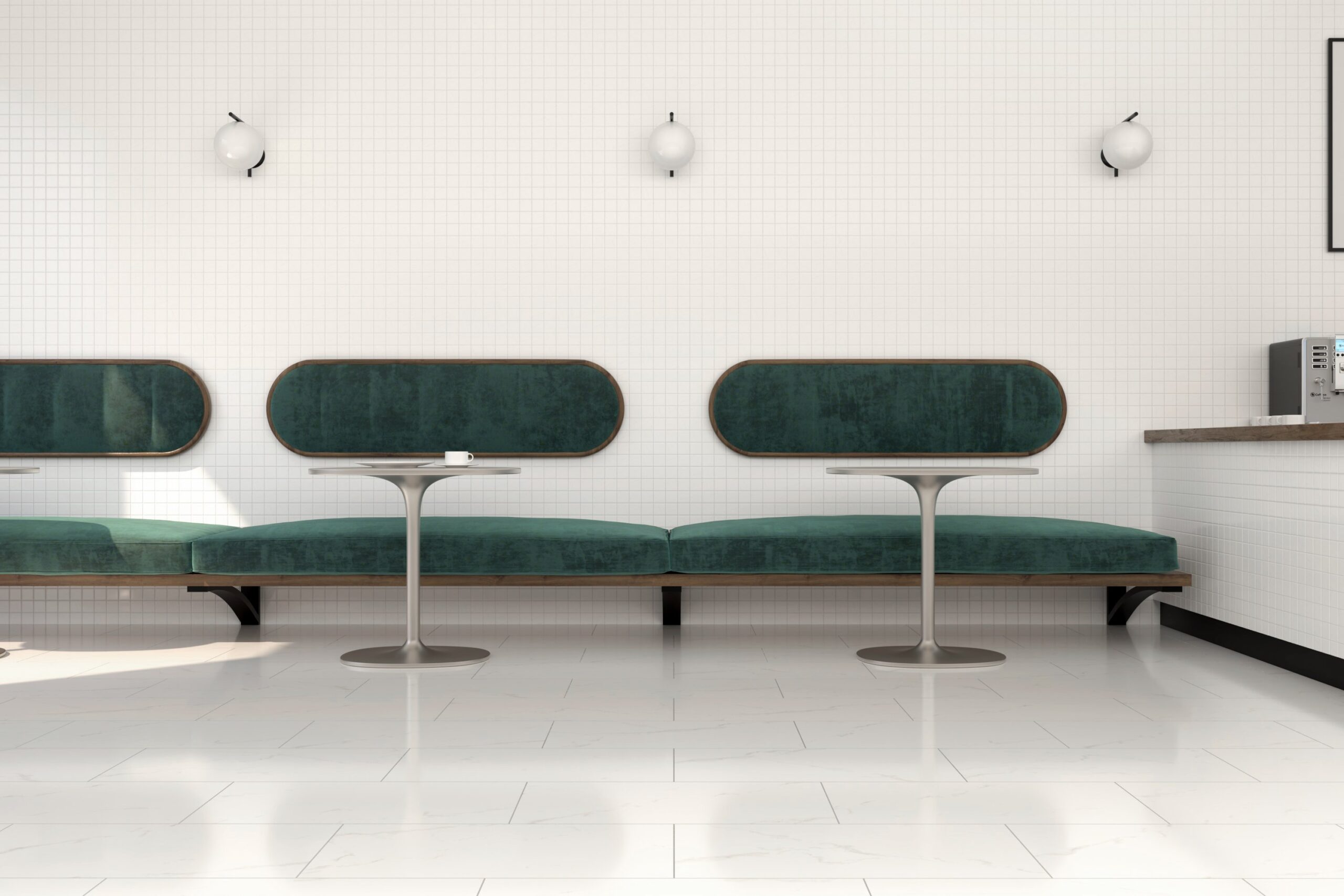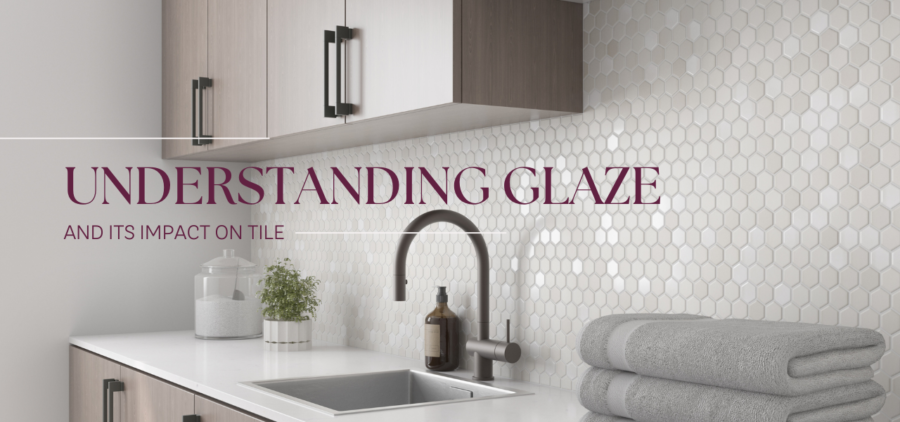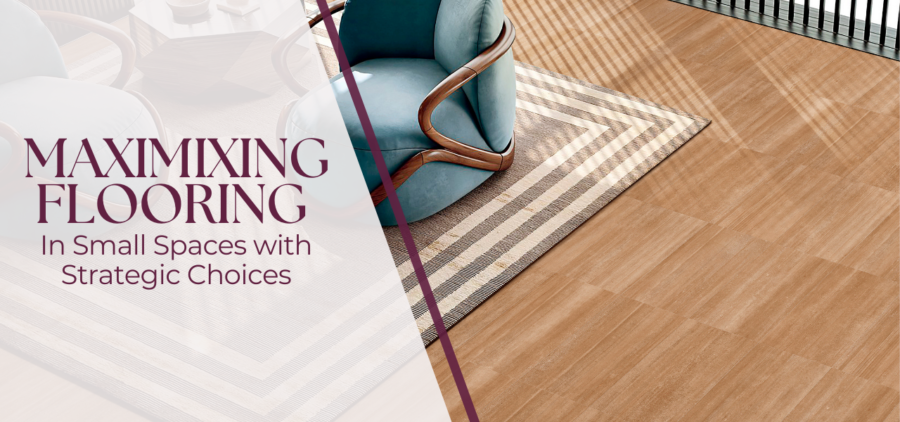
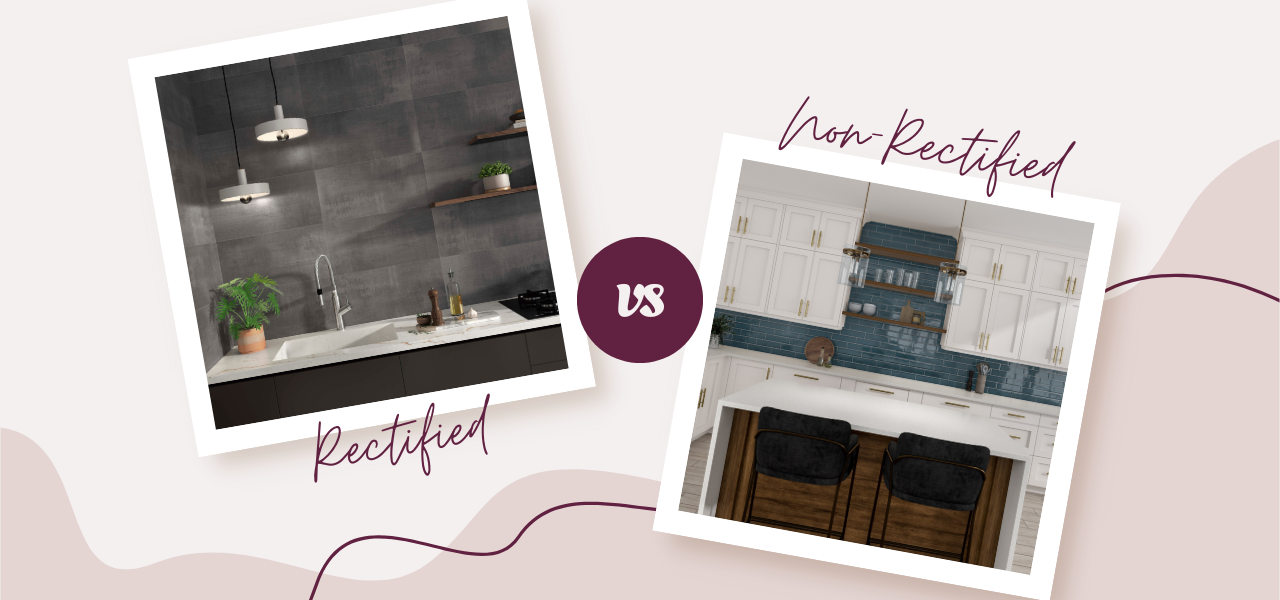
Rectified vs. Non-Rectified Tiles:
A Comprehensive Guide
In the world of interior design, every detail matters. Tiles are not just functional elements; they are integral to the aesthetic and atmosphere of a space. The choice between rectified and non-rectified tiles can significantly influence your commercial project’s final look and feel. Both options have unique benefits and considerations that can impact your design vision, durability, and budget. Inspired by UMORE’s approach to combining form and function, let’s explore the differences, advantages, and applications of rectified and non-rectified tiles to help you make an informed choice that aligns with your style and needs.
What Are Rectified Tiles?
Rectified tiles are ceramic or porcelain tiles that have been precisely cut to ensure uniformity in size and shape. This process involves grinding or cutting the edges of the tiles after they have been fired. The result is a tile with perfectly straight edges and a consistent size, allowing for minimal grout lines and a sleek, modern appearance.
Benefits of Rectified Tiles
Minimal Grout Lines
The uniform edges of rectified tiles allow for very narrow grout lines, creating a seamless and contemporary look. Tiles such as UMORE’s Lecce collection boast minimal grout lines and high-definition imagery, resulting in a remarkably natural appearance that imitates the true essence of concrete.
Precision
The exact sizing of rectified tiles ensures a uniform layout, which is especially important for large-scale installations.
Modern Aesthetic
The clean, straight edges contribute to a modern and sophisticated design, enhancing the overall appearance of any space.
What Are Non-Rectified Tiles?
Non-rectified tiles, also known as traditional tiles, are produced more conventionally. After firing, these tiles retain their natural edges, which may vary slightly in size and shape. This conventional approach results in tiles with more pronounced grout lines and a more rustic or classic appearance.
Benefits of Non-Rectified Tiles
Cost-Effective
Generally, non-rectified tiles are less expensive to produce and purchase than their rectified counterparts.
Versatility
Natural variations in size and shape can add character and timeless appeal to a space.
Easier Installation
Due to the slightly irregular edges, non-rectified tiles can be more forgiving during installation, accommodating slight variations in the substrate.
Are Rectified Tiles Better?
Whether rectified tiles are better depends on your specific needs and preferences. If you desire a sleek, modern look with minimal grout lines, rectified tiles are the ideal choice. However, non-rectified tiles may be more suitable if you prefer a more traditional or rustic aesthetic. Both types have their place in different design contexts, and the best choice depends on the style and functionality you aim for.
Disadvantages of Rectified Tiles
While rectified tiles offer many benefits, there are also some disadvantages to consider:
Higher Cost
Precision cutting adds to the production cost, making rectified tiles more expensive than non-rectified options.
Complex Installation
The need for precise alignment and minimal grout lines can make installation more challenging and time-consuming.
Susceptible to Chipping
The straight edges of rectified tiles can be more prone to chipping during installation or if subjected to heavy impact.
Why Are Rectified Tiles More Expensive to Lay?
The increased cost of laying rectified tiles is due to the meticulous installation process they require. The precise alignment needed for the narrow grout lines demands skilled labor, often at a higher cost. Additionally, the potential for chipping means that installers must handle the tiles with extra care, further adding to the labor expense.
How to Tell If a Tile Is Rectified
Identifying rectified tiles is relatively straightforward. Here are some key characteristics to look for:
Straight Edges
Rectified tiles have perfectly straight and uniform edges, unlike non-rectified tiles with slightly rounded or irregular edges.
Minimal Grout Lines
When installed, rectified tiles have very narrow grout lines, typically 1-2 mm, creating a sleek appearance.
Consistent Size
Rectified tiles are precisely cut to be the same size, which is not always true with non-rectified tiles. Tiles such as UMORE’s Milan collection feature precisely cut large format and square mosaic tiles.
Which Tiles Last Longer?
The longevity of tiles, whether rectified or non-rectified, largely depends on the material and the quality of the installation. Both rectified and non-rectified tiles can be made from durable materials like porcelain, which is known for its strength and longevity. Proper installation, maintenance, and the intended use of the space will significantly impact the lifespan of the tiles. Generally, whether rectified or not, porcelain tiles tend to last longer due to their high density and resistance to wear and tear.
Choosing between rectified and non-rectified tiles goes beyond mere functionality; it’s a statement of style and ambiance for your commercial space. Rectified tiles deliver a contemporary, seamless aesthetic with precise lines and minimal grout, perfect for creating a modern, sophisticated environment. Conversely, non-rectified tiles offer a traditional charm with their natural edges and versatility, making them ideal for timeless, classic designs.
Both options bring unique benefits that can significantly enhance your commercial space. By understanding the differences and carefully considering your project’s specific needs, you can make an informed decision that aligns with your design vision. Whether you opt for the sleek precision of rectified tiles or the enduring appeal of non-rectified tiles, our curated collections provide the perfect solutions to elevate your space. Discover the transformative power of suitable tiles and create a memorable, distinctive atmosphere that resonates with your brand’s identity.
Explore. Consult. Share. Find Your UMORE.
Contact us to get started on your tile journey, or dive into inspiration by browsing our collections.
UMORE™ is a visually inspiring line of floor and wall tile nationally distributed by Spartan Surfaces. At the core of UMORE is the belief that all creativity begins with a mood. Whether you’re a musician, an artist, or a designer, a mood serves as the foundation upon which your masterpiece is constructed. Our collections are thoughtfully curated, offering a variety of styles, colors, and sizes, with the goal of empowering you to construct a mood that reflects your unique vision. Explore our products, create wish lists, and order samples – UMORE is here to complete your mood, one tile at a time.


